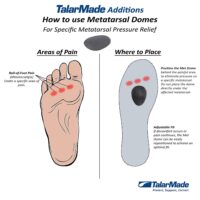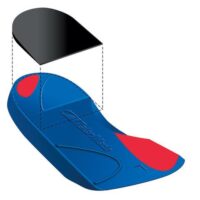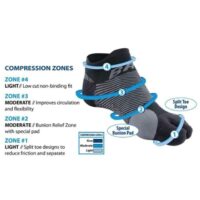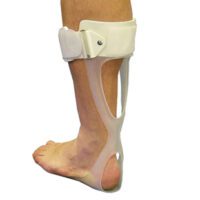Foot Stress Fracture
Article by J. Miller, S.Armfield
Foot Stress Fractures
What is Foot Stress Fracture?
A foot stress fracture is a small crack in one of the bones in your foot. This injury often results from repetitive force or overuse, particularly in activities like running or jumping. Over time, these tiny fractures can develop and cause significant pain, especially during weight-bearing activities. Early intervention and treatment are crucial to prevent further complications and ensure a full recovery.
Why Does a Foot Stress Fracture Occur?
Foot stress fractures typically occur when your bones are overloaded repeatedly without sufficient rest. This overuse can be due to activities that place continuous pressure on the feet, such as long-distance running, high-impact sports, or sudden increases in physical activity. Track and field athletes are at a higher risk, but anyone can experience a foot stress fracture if they rapidly increase their activity levels without proper conditioning. Ensuring that you gradually build up your exercise routine can help prevent this injury.
How is a Foot Stress Fracture Diagnosed?
A physiotherapist will assess your symptoms, review your activity history, and perform physical tests to determine if you have a stress fracture. Sometimes, imaging tests like X-rays or MRIs may be required to confirm the diagnosis. It’s important to seek professional advice as early diagnosis can prevent the fracture from worsening.
What are the Symptoms of a Foot Stress Fracture?
Symptoms of a foot stress fracture include:
- Persistent pain that worsens with weight-bearing activities.
- Swelling and tenderness at the fracture site.
- Difficulty in performing everyday activities like walking or standing for extended periods.
If you experience these symptoms, it’s essential to consult with a physiotherapist who can guide you through the appropriate treatment plan.
How is a Foot Stress Fracture Treated?
Phase I – Pain Relief and Inflammation Reduction: The initial goal is to manage pain and reduce swelling. Physiotherapists may recommend ice therapy, rest, and anti-inflammatory medications. In some cases, they might use techniques like electrotherapy, acupuncture, or soft tissue massage. If the injury is severe, you might need crutches or a walking boot to avoid putting pressure on the affected foot.
Phase II – Gradual Weight-Bearing: Once pain and swelling are under control, the focus shifts to gradually reintroducing weight-bearing activities. Your physiotherapist will guide you through this process, using methods like massage, stretching, and possibly orthotics to support your recovery.
Phase III – Muscle Control and Strength Restoration: Regaining strength and control of the foot’s muscles is vital. Physiotherapists at PhysioWorks offer a “Foot Posture Correction Program” to help restore natural foot posture. This program includes exercises tailored to your specific needs, ensuring that your foot functions correctly and reducing the risk of re-injury.
Phase IV – Full Function Restoration: This stage involves tailoring your rehabilitation to your activity goals. Whether you aim to walk comfortably or return to more demanding physical activities, your physiotherapist will create a plan that aligns with your objectives.
Phase V – Preventing Recurrence: To avoid future stress fractures, your physiotherapist will educate you on safely increasing exercise intensity. They might also recommend consulting a dietitian for nutritional advice, which can be particularly beneficial during intense training periods.
Foot Stress Fracture FAQs
- Why does a foot stress fracture hurt so much? Foot stress fractures cause pain due to the small cracks in the bone that worsen with pressure.
- How long does it take to recover from a foot stress fracture? Recovery time can vary, but it typically takes 6-8 weeks with proper care and rest.
- Can I continue to walk with a foot stress fracture? Walking can worsen the fracture, so it’s advised to limit weight-bearing activities until healed.
- What are the long-term effects of a foot stress fracture? Without treatment, a stress fracture can lead to chronic pain and more severe fractures.
- How is a foot stress fracture diagnosed? Diagnosis usually involves a physical exam and may require imaging tests like X-rays or MRIs.
- Can foot stress fractures heal on their own? While minor fractures might heal with rest, proper treatment ensures complete recovery and prevents complications.
- Is it possible to prevent foot stress fractures? Gradual increases in activity and proper footwear can help prevent stress fractures.
- What is the role of physiotherapy in treating foot stress fractures? Physiotherapy aids in pain relief, promotes healing, and helps prevent future injuries.
- Do stress fractures only occur in athletes? No, anyone can develop a stress fracture, especially with sudden increases in physical activity.
- Can nutrition affect the risk of foot stress fractures? Yes, adequate nutrition, particularly calcium and vitamin D, plays a role in bone health and can reduce the risk of fractures.
Latest Research
Recent studies suggest that a combination of rest, proper footwear, and tailored physiotherapy programs significantly reduces the healing time for foot stress fractures. Researchers have highlighted the importance of early diagnosis and comprehensive rehabilitation in preventing recurrence (Paavana et al.,, 2024).
What to Do?
If you suspect you have a foot stress fracture, it’s crucial to consult a physiotherapist. Early intervention can make a significant difference in your recovery. PhysioWorks can provide a personalised treatment plan to help you return to your desired activity level safely.
Rochedale - Call 38410277
Book Online: RochedaleSalisbury - Call 32751044
Book Online: SalisburySandgate - Call 32691122
Book Online: SandgateRelated Articles
- Foot Pain Causes & Treatment
Discover various causes of foot pain and effective treatment options. - Heel Pain Treatment Options
Explore treatment strategies for heel pain and prevent future issues. - Ankle Sprain Management
Learn how to manage ankle sprains and promote fast recovery. - Shin Splints: Symptoms & Treatment
Understand shin splints and how to treat and prevent them. - Plantar Fasciitis Pain Relief
Find relief from plantar fasciitis with targeted therapies. - Achilles Tendinopathy Recovery
Get back on your feet with effective Achilles tendinopathy treatments. - Stress Fracture Prevention Tips
Learn how to prevent stress fractures with simple lifestyle adjustments. - Orthotics: When and Why You Need Them
Discover how orthotics can support foot health and prevent injuries. - Knee Pain Treatment Options
Explore comprehensive treatment options for knee pain relief. - Sports Injuries and How to Recover
Read about common sports injuries and the best recovery practices. - Mayo Clinic – Stress Fractures
This article explains the causes and symptoms of stress fractures, along with preventive measures. - Foot Stress Fractures: What You Need to Know
An in-depth look at the symptoms, diagnosis, and treatment of foot stress fractures. - Stress Fracture Symptoms and Treatment
A detailed guide on identifying and treating stress fractures, with tips on prevention.





















































































